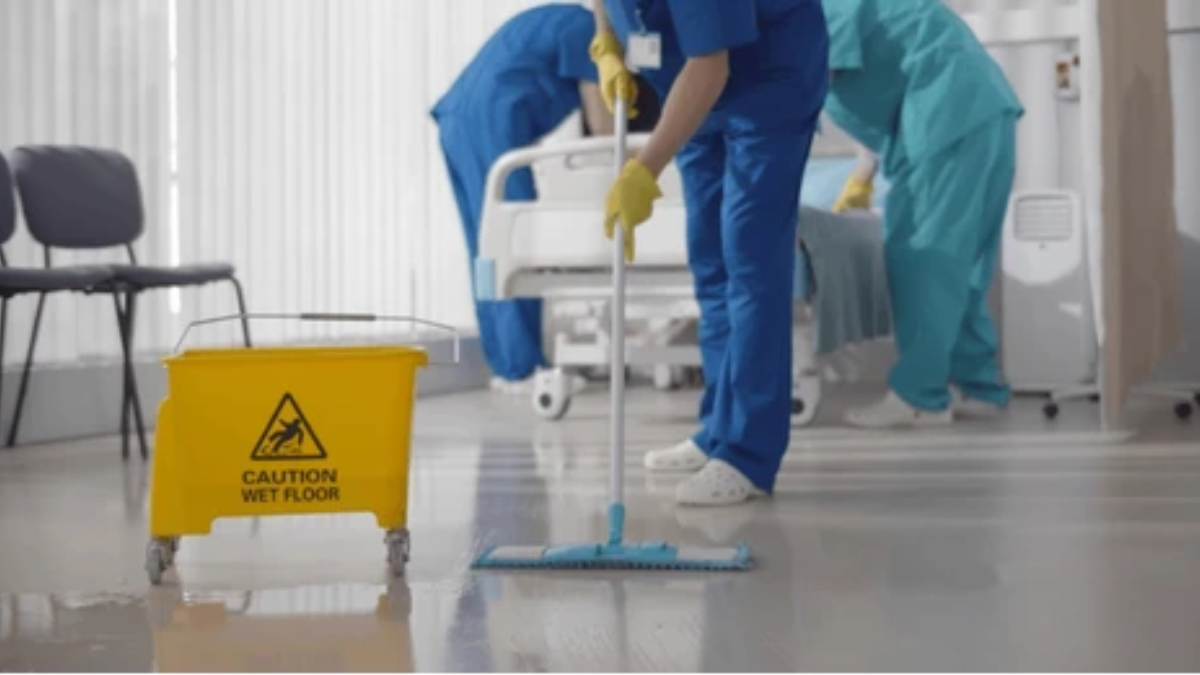Cleanliness in hospitals is not just about appearance—it is a crucial factor that ensures patient safety, prevents infections, and builds trust. A hospital must maintain strict hygiene standards because it deals with vulnerable patients who are more prone to catching infections. Proper sanitation and cleanliness are essential for smooth operations and positive health outcomes.
Why Cleanliness Matters in Hospitals
- Prevents Infections: Reduces hospital-acquired infections (HAIs).
- Promotes Healing: A clean environment supports faster recovery.
- Protects Staff: Doctors and nurses are also safe from infectious diseases.
- Improves Reputation: Patients trust hospitals that are visibly clean and hygienic.
- Supports Regulations: Hospitals must meet government health and safety standards.
Key Areas Requiring Cleanliness
1. Patient Wards and Rooms
- Regular cleaning of beds, linens, and furniture.
- Use of disinfectants on frequently touched surfaces.
- Proper waste disposal systems.
2. Operation Theaters
- Sterile environment is mandatory.
- Equipment must be disinfected before and after every surgery.
- Air filtration systems reduce infection risks.
3. Intensive Care Units (ICU)
- Constant sterilization of life-support machines.
- Strict protocols for visitors and staff entry.
- Isolation facilities for infectious patients.
4. Waiting Areas and Lobbies
- Frequent sanitization of chairs, floors, and doors.
- Clean drinking water and washroom facilities.
- Pest control to avoid contamination.
5. Hospital Kitchens and Cafeterias
- Food must be cooked and served in hygienic conditions.
- Proper storage to prevent bacterial growth.
- Regular inspections to maintain food safety.
6. Toilets and Washrooms
- Continuous cleaning and sanitization.
- Use of hand sanitizers and soap dispensers.
- Separate facilities for patients, staff, and visitors.
Methods to Maintain Cleanliness in Hospitals
- Daily Cleaning Protocols: Floors, surfaces, and medical instruments cleaned with disinfectants.
- Sterilization of Equipment: Autoclaving and chemical sterilization.
- Proper Waste Management: Segregation of biomedical, plastic, and general waste.
- Use of Personal Protective Equipment (PPE): Masks, gloves, and gowns reduce contamination.
- Air Quality Control: Air purifiers and proper ventilation reduce airborne infections.
- Hand Hygiene Practices: Frequent hand washing by staff and patients.
- Regular Audits: Inspections by hospital authorities to ensure hygiene compliance.
Role of Staff in Maintaining Cleanliness
- Doctors and Nurses: Follow hygiene protocols during treatment.
- Housekeeping Staff: Perform cleaning and sanitization regularly.
- Administrators: Ensure hospital policies include strict sanitation measures.
- Patients and Visitors: Must follow rules like using sanitizers and wearing masks.
Impact of Cleanliness on Patients
- Reduced Risk of Infections: Patients recover without secondary illnesses.
- Better Mental Health: A clean environment reduces stress and promotes positivity.
- Trust in Healthcare System: Patients prefer hospitals known for hygiene.
- Improved Treatment Outcomes: Clean surroundings prevent complications.
Challenges in Maintaining Hospital Cleanliness
- Large patient inflow leading to overcrowding.
- Shortage of cleaning staff in busy hospitals.
- Improper waste disposal in some facilities.
- Spread of antibiotic-resistant bacteria.
- Lack of awareness among visitors.
Future of Cleanliness in Hospitals
- Robotic Cleaners: Automated machines for cleaning and sanitizing.
- UV Sterilization: Use of ultraviolet light to disinfect rooms.
- Smart Waste Systems: Automated disposal of biomedical waste.
- Awareness Programs: Educating staff and patients about hygiene.
FAQs About Cleanliness in Hospitals
1. Why is hospital cleanliness important?
It prevents infections, protects patients, and supports faster recovery.
2. What are hospital-acquired infections (HAIs)?
Infections that patients catch while receiving hospital treatment.
3. How are operation theaters kept clean?
Through sterilization of instruments, use of disinfectants, and air filters.
4. Who is responsible for hospital cleanliness?
Housekeeping staff, hospital administration, medical staff, and visitors all share responsibility.
5. What role does waste management play in hospitals?
Proper segregation and disposal prevent the spread of infections.
6. How do hospitals keep ICUs clean?
By sterilizing equipment, limiting visitors, and isolating infectious patients.
7. Can cleanliness reduce hospital costs?
Yes, fewer infections mean fewer treatments and reduced costs.
8. Do patients notice cleanliness in hospitals?
Yes, cleanliness builds trust and impacts hospital reputation.
9. How often are hospitals cleaned?
Hospitals follow daily, weekly, and emergency cleaning schedules.
10. What new technologies help in hospital hygiene?
UV sterilizers, robotic cleaners, and smart waste systems.

